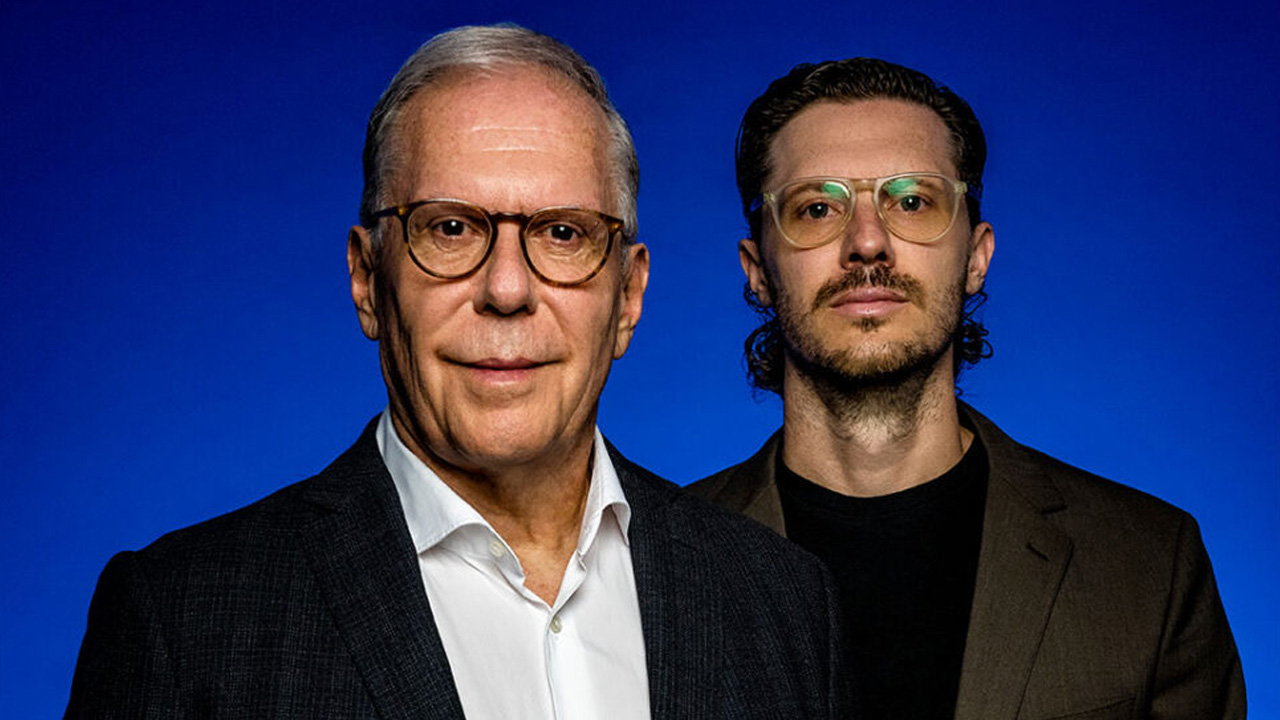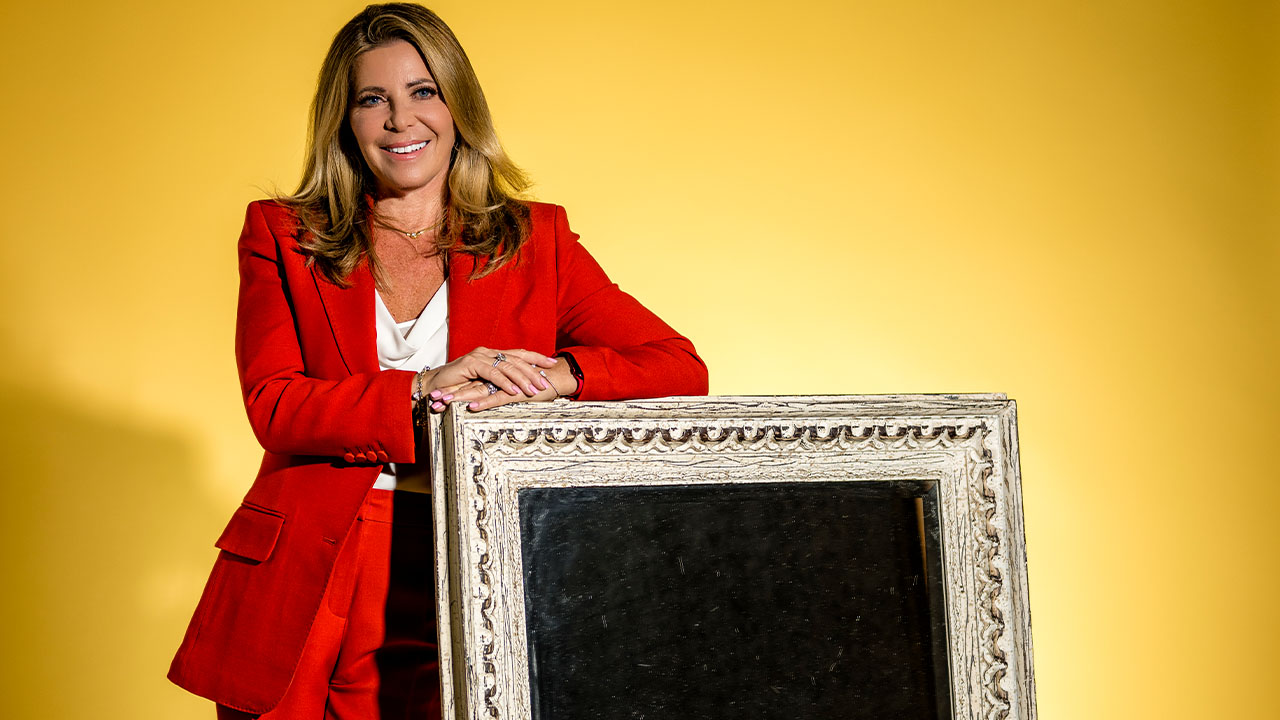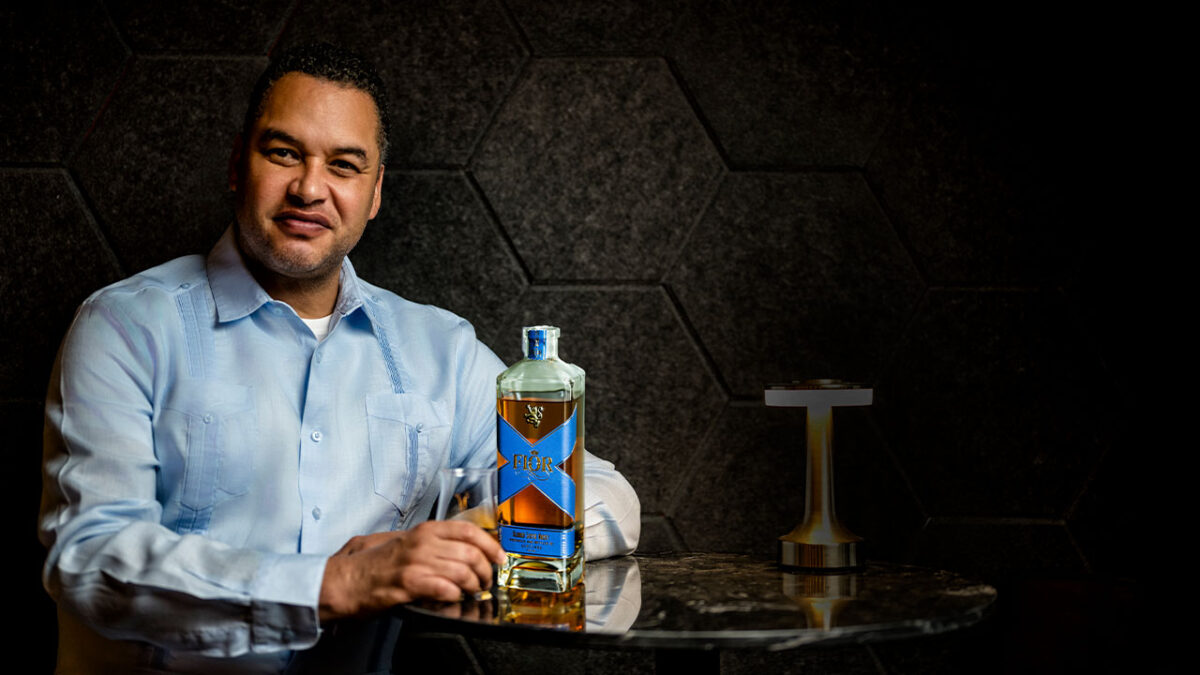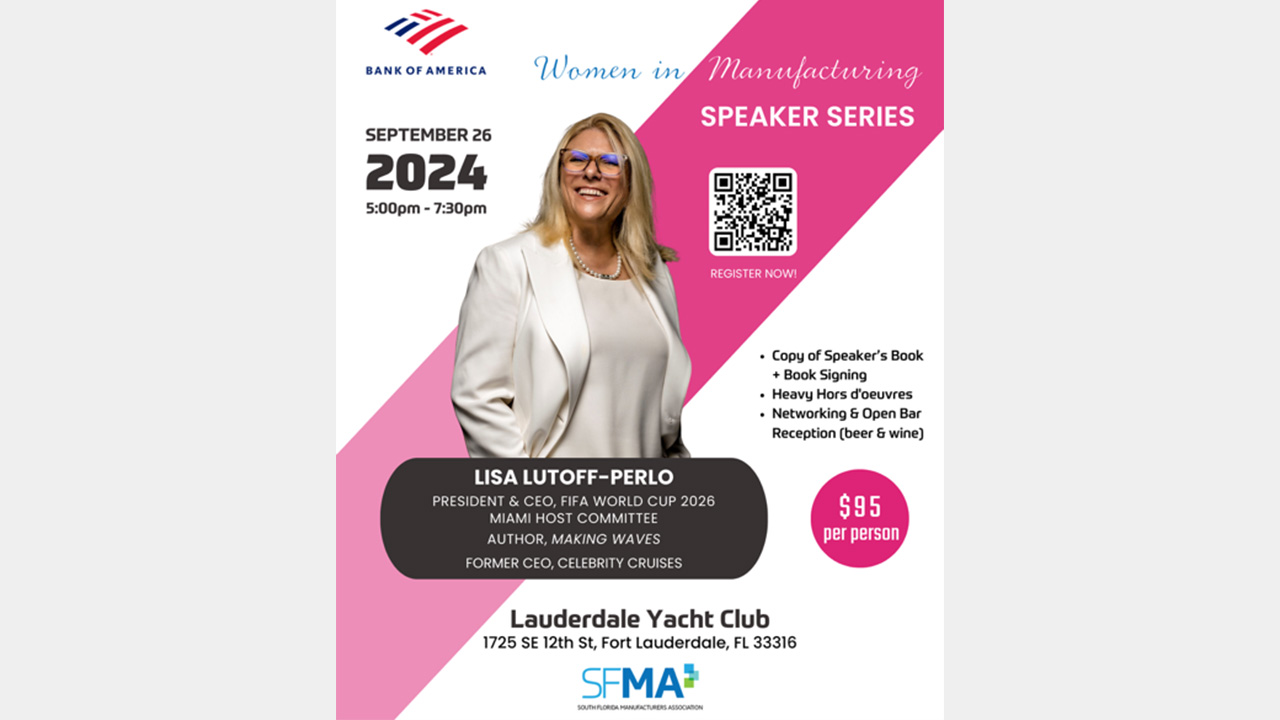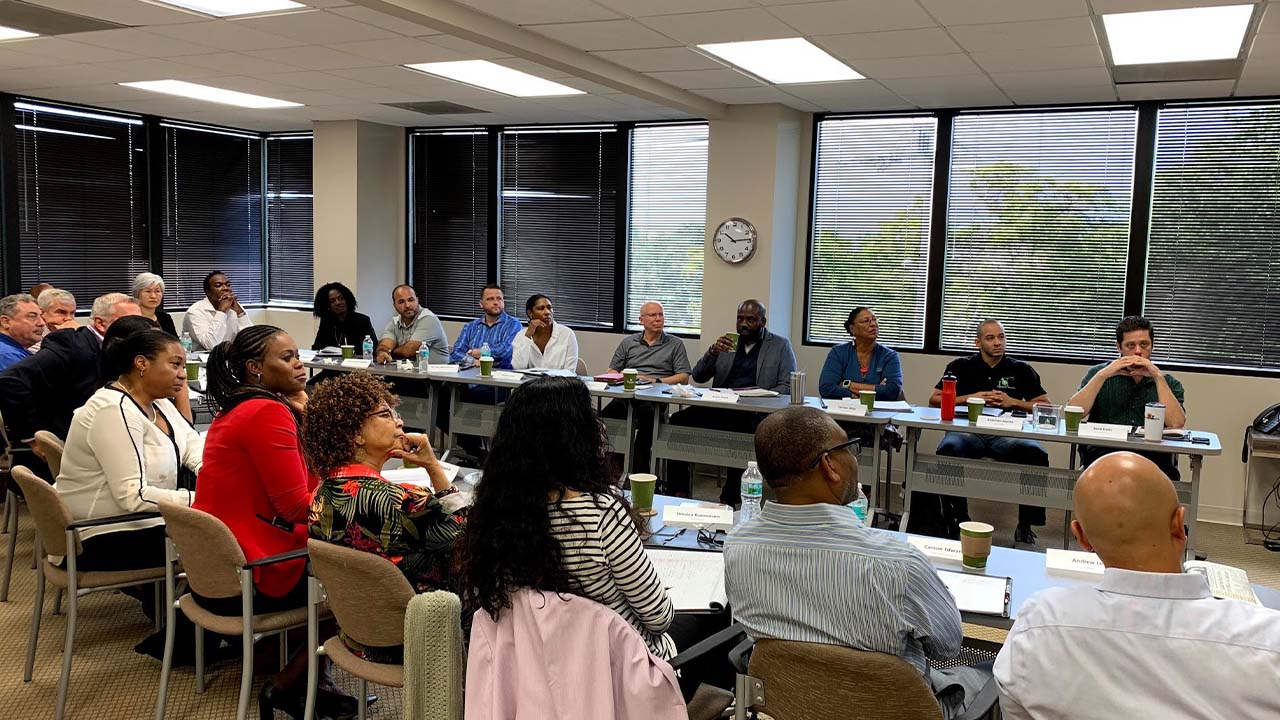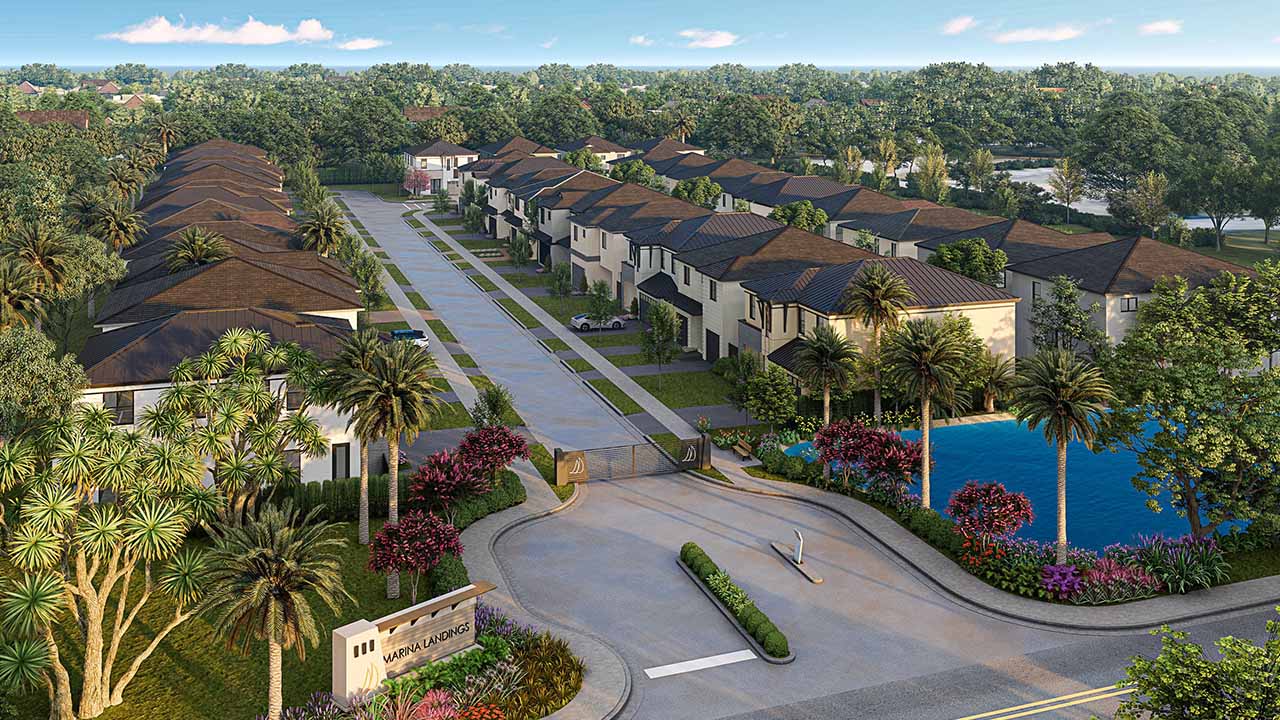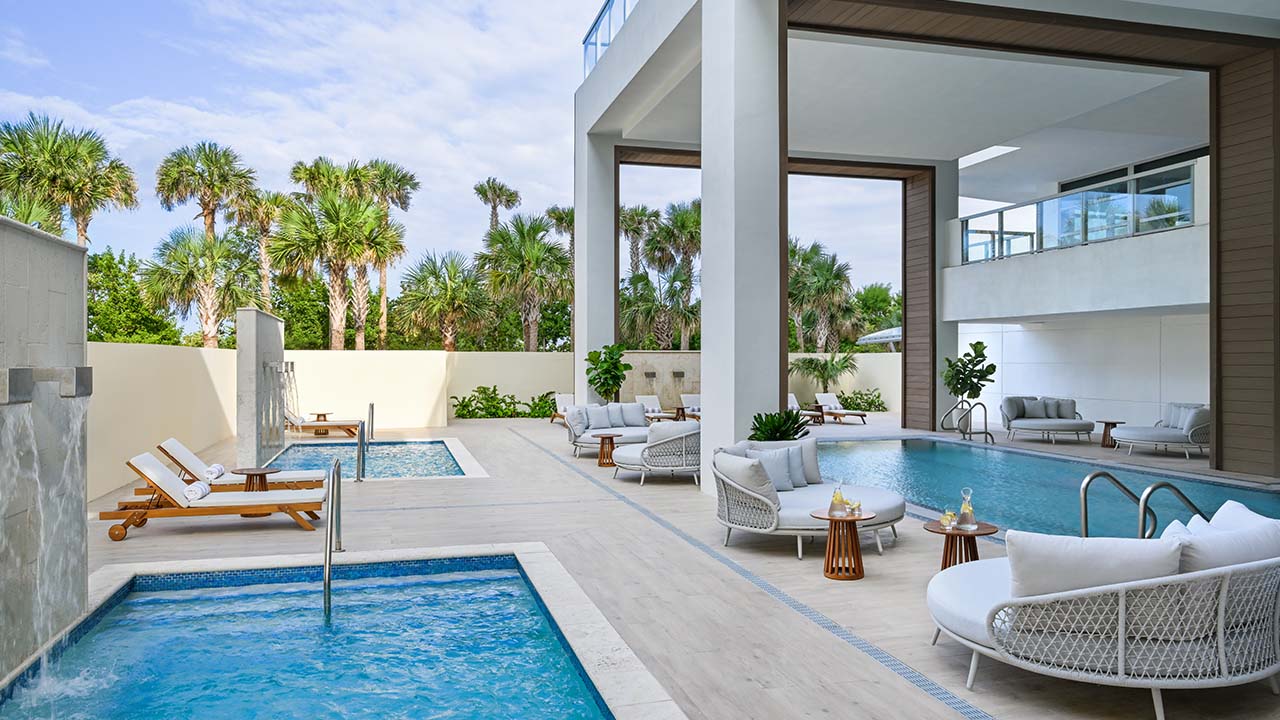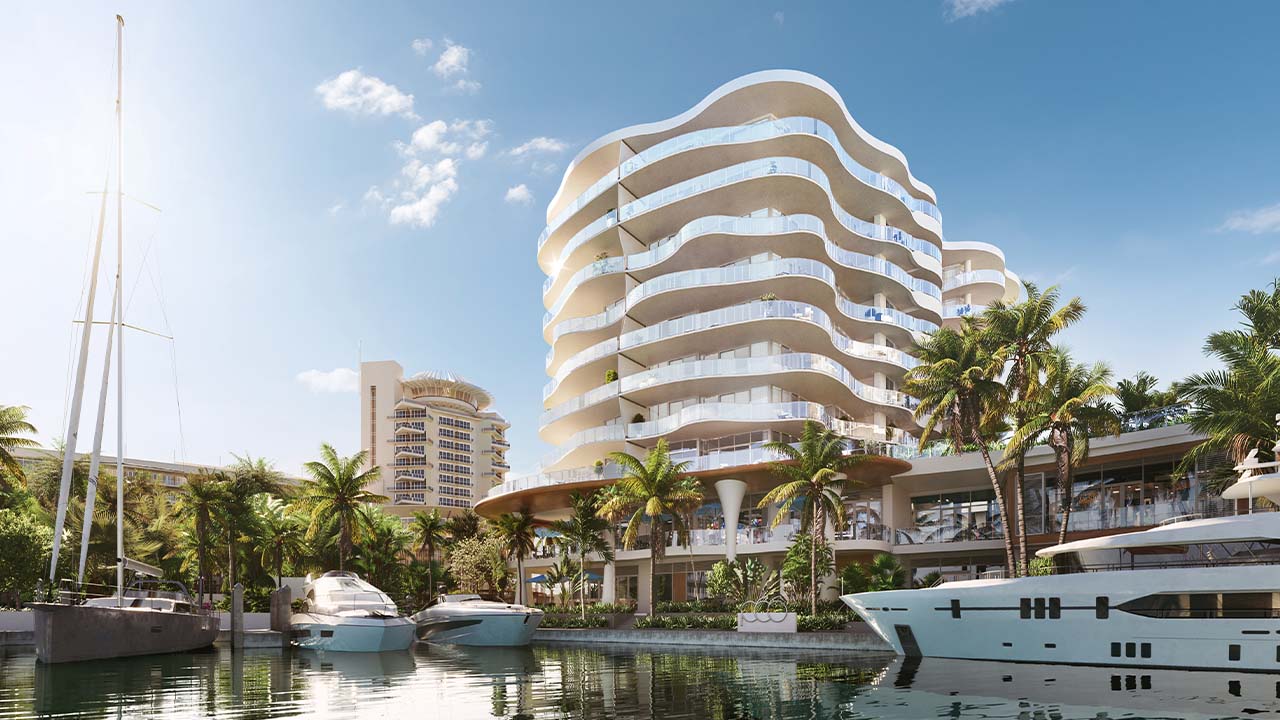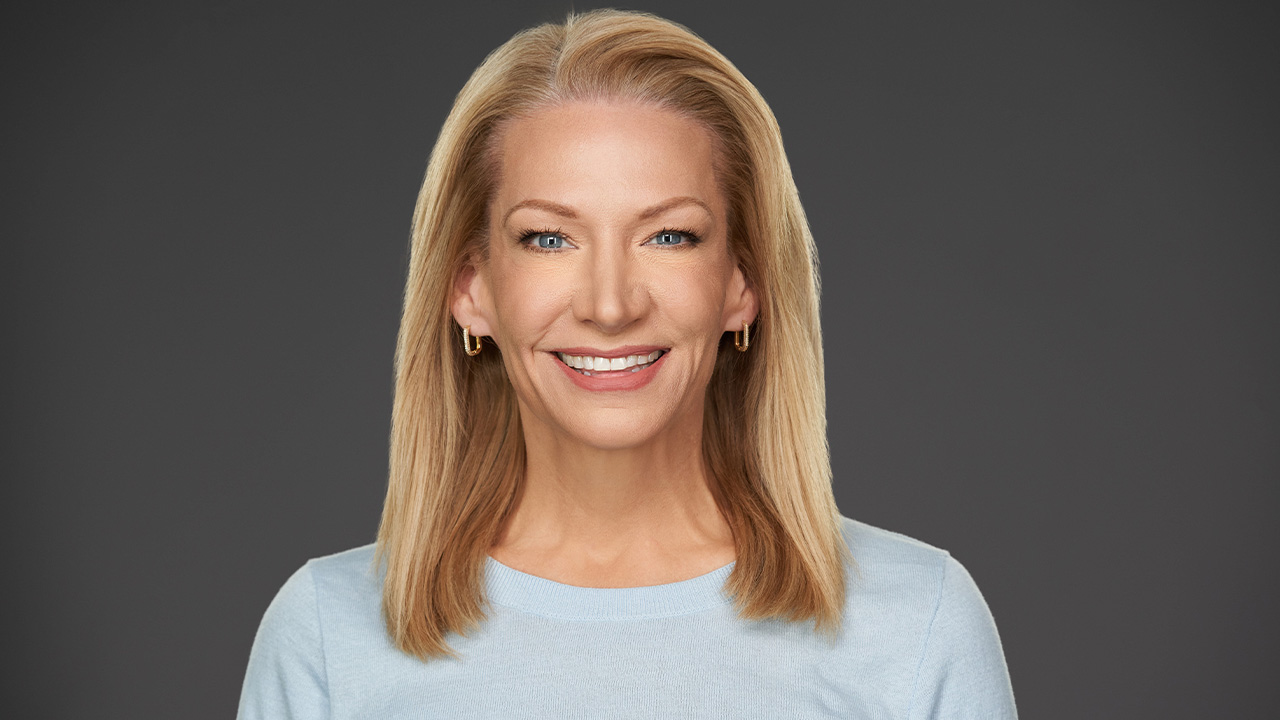You’d be hard-pressed to name any company, in any industry, that is as synonymous with South Florida as Arquitectonica. (Okay, maybe the Related Group, but more on that later.) The firm created 500 Brickell, Icon Brickell, Brickell City Centre and the Kaseya Center (formerly the American Airlines Arena), plus Terminal V for Virgin Voyages, the Dorsey in Wynwood and the Ritz-Carlton Residences Sunny Isles. Under construction is a list that includes Mr. C Residences in Coconut Grove, the MSC Terminal at PortMiami, Baccarat Hotel and Residences, and Natiivo. That list merely scratches the surface of the firm’s output.
That’s quite an imprint on Miami. Of course, that signature spreads when you consider that Arquitectonica has offices in New York, Los Angeles, Paris, Lima, Shanghai and other powerhouse cities. SFBW spoke to Lima-born Bernardo Fort-Brescia and Miami-born Raymond Fort about interpretation, innovation and collaborating with other marquee names in development.
Raymond, given your stellar background—degrees in architecture from Cornell and Columbia—was it assumed when you were very young that you would become an architect, or did you consider other occupations?
Raymond: I think growing up near the water and in Miami had a pretty big influence on me, and initially I had a big fascination with naval architecture. As I started to think about it more and how people interact with spaces in the built environment, I looked at architecture as the right path to follow. Also, from a young age I did a lot of fine art, so architecture blended those two interests. I’ve always had a strong interest in the way people live, and not just the architecture of buildings but in the planning of cities and how the architecture ties into that.
What type of fine art did you create?
Raymond: Primarily painting and other mixed media. I think that gave me the ability to visualize things that that I was thinking about and some of it translated into this strong interest in naval architecture and also how the water interacts with cities.
This makes an apt segue to a nautical-themed Arquitectonica project that I pass several times a week, the PortMiami Tunnel on the MacArthur Causeway, which connects Miami to Miami Beach. It won several design awards, and it has an enigmatic quality that’s intrigued me since it opened in 2014. It feels like a modern interpretation of an ancient monolith.
Bernardo: It’s true that there is something archeological about it. This was a difficult program because the entrance to the tunnel required a blade, like a guillotine, that would close if there’s a hurricane, so the water doesn’t get into the tunnel. It’s essentially an emergency floodgate.
Raymond: It has to essentially drop down—think of it like a fly tower in a theater. It has to basically conceal and close up the entire tunnel in the case of a storm event or some severe storm surge, so it has to be quite high. So, the design is a way to make you feel like it’s part of that entry experience to Miami Beach. The project didn’t just include the floodgate itself. In this case ArquitectonicaGEO, the landscape division within the firm, was able to work with us in creating a green roof that cascaded as you sort of climb up to those 40 feet and then the remainder of it essentially extends beyond, but it almost feels like a monument that is holding back the earth that is against its opposite side.
Bernardo: The façade has all kinds of subliminal messages in different languages. It uses all these words about navigation and boats—nautical language from history—and it is all integrated into the concrete as if it had been chiseled in hieroglyphics like in Roman structures or Greek structures. It was to give a message of entrance to the port using words that related to navigation.
Another thing that intrigues me about the structure is that part of its materiality is light—a blade of orange light.
Bernardo: We used orange because you associate orange with Florida, and so there are lines of orange that define the proportions of the monument. It’s really a big monolith; we needed it to read at night, because in the daytime you see the light and shadow of the of the lettering, but at nighttime the orange color gives it life and brings in some of the spirit.
How do you want people to feel when they enter South Beach and see that structure?
Bernardo: We don’t mind if they think it’s some kind of historical piece that is left there from some other moment in history. It’s OK to interpret—some people may think it’s a modern sculpture, not a building.
Let’s stay in this area of the port. The cruise ship terminals are becoming increasingly architecturally distinctive.
Bernardo: The first terminal we did there is the Virgin terminal that is almost like a grove of palm trees—columns of different angles that are holding up this roof that has rough edges, as if you were under the canopy of trees. Of course, it’s abstract. The new one that we’re doing is the MSC Cruises terminal, the largest of all the terminals.
Is it the largest cruise ship terminal in the world?
Bernardo: It’s the largest terminal in the world and it is intended for two megaships of 7,500 passengers each. I don’t know if you’ve seen the renderings of the sweeping shape—sometimes when you have something that long, thousands of feet long, maybe it’s even more interesting to further exaggerate the proportion. It is intended to create this sort of sense of extension forever; the shape gives it movement. We wanted a dynamic shape, not something that was stacked, to refer to the arrival and departure of ships. Dynamic versus static is a very important aspect of nautical architecture. Raymond was explaining that since childhood he’s had a fascination with naval architecture, and in a way this building has some of that feeling of movement that you sense in naval architecture.
To jump back to Virgin Voyages, did you work directly with Richard Branson?
Bernardo: Up to a certain point, at critical moments. He has a very good team.
Can you describe your first meeting with him?
Bernardo: Actually, I only met him at the beginning and the end. We were introduced when we were awarded [the project] and then when the place was open—and also when it was announced. He’s a very charismatic person and he occupies the room. There’s a certain verbal and visual charisma that obviously explains how he got where he is. He’s an imposing figure, but having said that, some people have a glorious position and have a hard time being humble, but he’s very humble and comes across as kind, which is a great quality to have when you’re in that kind of position.
You’ve enjoyed so many other key collaborations with major names in development. Tell me about your experience with Harvey Hernandez on the Natiivo and Lofty condominiums.
Bernardo: Harvey is very creative, a forward-thinker in all ways. He might come up with some new idea that adds value. It’s really admirable because he’s always looking for something new. He’s not satisfied doing the same thing that everyone else does. It’s great to work with him because architects love to have clients like that, who are openminded and creativity in their blood.
Raymond: I completely agree—he really looks across all groups of people, age brackets, to understand what people are thinking and how they want to live, and I think some of the concepts that he’s brought to the Miami market and other markets, as well, have really been sort of gamechangers. [Natiivo and Lofty] have changed the way that people perceive how one can use an apartment.
Bernardo: Think about it—how he came up with this idea of creating an official version of an Airbnb condo. There’s always controversy around Airbnb—who’s in my building?—and then he creates instead: Let’s solve the problem, we’ll create a real building where it’s understood that you can Airbnb it. It’s not just our design; it’s also his physical conceptualization of that idea. He’s a master programmer. As architects, that’s the way we like to think. We work for the betterment of society, that’s our field, so therefore it’s always interesting when there’s some innovation.
What about working with the Related Group? There’s a nice symmetry, generationally, between you and Jorge Perez, and then Raymond being a contemporary of Jorge’s sons, JP and Nick.
Bernardo: You’re correct; you picked up on it. There’s a generational affinity. It’s very unusual that there will be two generations—architect, developer—that are still working together. It’s really fun but it’s also an amazing phenomenon that is happening between the two families.
You and Jorge go way back, right?
Bernardo: I’ve known Jorge since the first project we did with him when he was planning on bringing residential projects to a downtown location. Downtown Miami was offices and after 5 o’clock you could hear a pin drop. Nobody lived downtown in or in the financial district of Brickell. I remember when Jorge called me about doing a first residential building across the river; that was really pioneering. He dared to cross the other side, north of the river, to build two huge buildings with 450 units each. But I think it was transformative. How many cities in America continue to have a downtown made up exclusively of offices, and nobody lives there? But Miami, come on, there’s everything. I mean all of Brickell Avenue is mixed: hotels, residential, Brickell City Centre—that’s one of our projects, retail. How many companies move here and are trying to attract young talent? They ask, “Where is my staff going to live?” If you tell them they’re going to commute to the suburbs, that’s not a good idea. People are coming from cities where they can walk nearby from home to work. Jorge was the initiator of that trend and we’re proud to have been a part of it. Since then, we did 500 Brickell and Icon Brickell, and then we moved on to new neighborhoods—for example, Edgewater with Paraiso.
Raymond: I think the same goes for Nicky and JP, in that they’re looking at and pioneering other neighborhoods that previously people thought couldn’t handle any residential—or offices, for that matter. We look at Wynwood today and some of the first residential buildings built there were developed by Nicky and JP. The Dorsey was recently completed and it’s the first multifamily building of that size in that neighborhood. And then you also look at the office building that we designed for them in Coconut Grove, and no one was building new office buildings in Coconut Grove. Now suddenly after they’ve completed it, Coconut Grove is the place to build a small boutique office. I think they’ve been outstanding in being able to understand the dynamics of the city, and not just Miami, but also Fort Lauderdale, West Palm Beach and other areas north of Miami. It’s knowing how people are mobilizing and where they want to be, and also what are some of the missing components of a neighborhood? I think that a big part of development, especially in South Florida today, is understanding how to complete the neighborhoods. We want to create a series of complete neighborhoods, not neighborhoods that are missing essential components.
Raymond, since you mentioned the Dorsey, did you have a major hand in this project and its vision?
Raymond: Yes, I think that it started as a feasibility study back in February of 2019, and by May of 2019, we were already getting ready to submit the final design. So, it moved pretty quickly, and honestly, at that time, building residential in Wynwood was still questionable. I think that now that it’s completed and moving very quickly with leases, it’s really proving that residential works there, so much so that now Nicky sort of took charge of putting in the first residential condo in Wynwood [the Dorsey is a rental building]. Things evolve very quickly for that neighborhood. We’re talking about a neighborhood that 10 years ago I used to go to and it was primarily surface parking lots and single-story warehouses. Some of them had art galleries, some of them didn’t, and it was still just working its way towards what it is today.
Sounds like history is repeating.
Bernardo: There’s a degree of parallel between my beginnings with Jorge and how the same is happening between Raymond and JP and Nicky. There’s also something that is parallel in the sense that they are very quick decision makers, very agile at advancing projects at a very high speed and capturing the essence of a place. Our office is also noted for being pretty quick, and resolving issues that come up in projects in a very efficient way, and so we work very well together.
Photos by Nick Garcia



